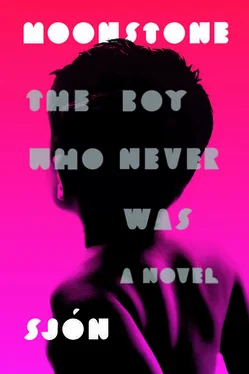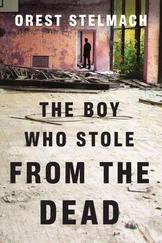The distinction, in other words, lies in the fact that what is presented to the gaze of the cinema viewer is not real flesh-and-blood human beings but only moving pictures of people, “simulacra” created from light and shadow at the moment when the actor is filmed lending his body and emotions to the puppet that is then placed on view.
Anyone who has observed a child playing with a doll will know how intently the child examines it by touch as well as gaze. Fingers and eyes probe the physical form with the precision of a master surgeon who has been assigned the task of dissecting a body to the bone. Every nook and cranny is inspected; nape of neck and ear, groin and instep are caressed.
In the same fashion, the cinema audience scrutinizes the light-puppets on the silver screen, and whether it is the curve of Asta Nielsen’s back, Theda Bara’s naked shoulders, Pina Menichelli’s sensual eyelids, Clara Kimball Young’s slim ankles, Musidora’s Cupid’s bow, Gunnar Tolnæs’s strong fingernails, Douglas Fairbanks’s firm thighs, or Max Linder’s soft eyes, the body part in question and its position will become the focus of the viewer’s existence and etch itself into his psyche, while the size of the image and the repeated close-ups of lips, teeth, and even tongues will exacerbate the effects until few have the strength to resist them.
Film is thus immoral by its very nature, transforming the actor into a fetish and fostering perversion in the viewer, who allows himself to be seduced like a moth to the flame. The difference lies in that the cinema audience’s appointment is with the cold flicker of the flame rather than the searing fire itself. The moth burns up, but the viewer can, without fear, surrender to his escalating desire and seek out the experience over and over again, as is, alas, far too often the case.
— Dr. G. Árnason, excerpt from “Cinema and Mental Disorders,” The Nation 23 (1916)
* * *
On the evening of Tuesday, November 26—the day that twenty-six funerals are held at the cathedral and the coffins are interred in a single mass grave in the northeastern corner of the cemetery — Máni Steinn and Sóla G— pass through the auditoriums of the Old and New Cinemas, igniting chlorine gas on the doctor’s instructions.
Dressed in black from top to toe, with black gauze over their noses and mouths and dark goggles over their eyes, they drip hydrochloric acid into ceramic jars containing a solution of calcium chloride, which they have placed at intervals between the seats.
As soon as the cloud of vapor begins to rise, they race outside into the street, closing the doors firmly behind them.
Trembling with excitement, the boy pretends to cough.
The greenish-yellow gas that had lately felled young men on the battlefields of Europe now drifts and rolls through the picture houses of Reykjavík.
VIII (November 30–December 1, 1918)
The first film to be shown in Reykjavík when the epidemic began to abate at the end of November, and it was thought safe to gather in public again, was called Sister Cecilia —“the lyrically beautiful love story of a young artist,” in four parts. The proceeds of the ticket sales went to support the many children who had been left orphaned by the epidemic.
Although Máni Steinn was running a little low on cash after his busy days and nights with Sóla G— and Dr. Garibaldi Árnason — he’d had neither the energy nor the opportunity to pick up any trade — he was still sufficiently well-off to be able to invite the old lady to a show at the New Cinema.
Not that it was an easy matter to persuade her to accept the offer. First she told him it wasn’t fitting for him, a child in her care, to treat her to anything. He replied that he had turned sixteen on April 23 and that it was only natural that their roles should be reversed. Such was life.
Well, then the old lady pleaded in her defense that she had already been to the kinematograph long ago, more than once in fact — if not three times, then at least twice — and it had always been the same damned waste of time, apart from one newsreel from Thingvellir that included a brief glimpse of Reverend Matthías Jochumsson, seated in a chair with knees spread wide, a walking stick between them and a bowler hat on his head, and that was only because the grand old man of poetry was a relative of theirs.
However, when the boy described for her the company and amenities in the more expensive seats of the New Cinema — which included an ashtray in the arm of every chair — she grudgingly agreed to accompany him.
The old lady said she had always envied the father of her landlord downstairs, who got to sit with his friends in the smoking room, wreathed in a fog of cigars, and whenever she was sent in there with soda water or a new decanter of brandy, she used to linger with them in the cloud of tobacco for as long as could be considered decent.
The film was delayed by thirty minutes while the cinemagoers offered one another their condolences, passing from row to row, neither pressing hands nor embracing but bowing their heads and repeating the same words of consolation with the variations “your daughter,” “your sister,” “your wife,” “your husband,” “your son,” “your brother”—since everybody had lost someone.
A silence fell when the last member of the audience entered the auditorium. It was the teenage girl who had been shut up for thirteen days with the bodies of her mother and brother. She was led in between a nurse and an orderly from the lunatic asylum at Kleppur. From the look in her eyes it was plain that she would not understand the words of sympathy that were burning on everyone’s lips.
The lights went down.
Children appeared on the screen, escorted by an angel; holy sisters knelt before a tombstone; lovers were denied a happy ending.
The screening was accompanied by Reynir Gíslason’s Orchestra, and to begin with the music managed to drown out the sighing and weeping. Thick smoke rose from the more expensive seats, where the men were chain-smoking cigars in the hope that this would stifle their sobs.
When they came out afterward, the old lady wiped a tear from her eye and extracted a promise from the boy that he would never again invite her to the cinema.
The sun casts its rays over the town. The weather couldn’t be finer; dry and not a cloud in the sky. Máni Steinn threads his way through the throng by the harbor like a needle through sackcloth until he reaches a good spot on the docks.
There the Danish warship Islands Falk is lying at berth, festooned with bunting from mast to mast, the Danish national flag taking pride of place over the Icelandic one.
Shortly after the cathedral bell has tolled half past eleven, the marines of the Falcon stand to attention on the deck of the ship, then march ashore with rifles at their shoulders and flashing bayonets. Thus equipped, they progress with regular steps from the docks to Government House, where they form an honor guard below the wall of the green. The brass band Harpa is already there with its leader, Reynir Gíslason, haggard from lack of sleep.
The thick press of people sets off in pursuit of the column of marines, and the boy allows himself to be carried along. Most of the spectators take up position on Lækjargata, some standing in the square, others lining up on the slope to the right of Government House. He finds himself a spot in the square.
The officers of the Falcon approach, decked out in uniform, with the consuls of foreign powers, and together process up to the main entrance, before which stand members of the government and the Reykjavík worthies who have been invited to attend the ceremony. Among the guests, the boy spies the landlord from downstairs and the broker Gudbjörn Ólason, father of Sóla G—.
Читать дальше












